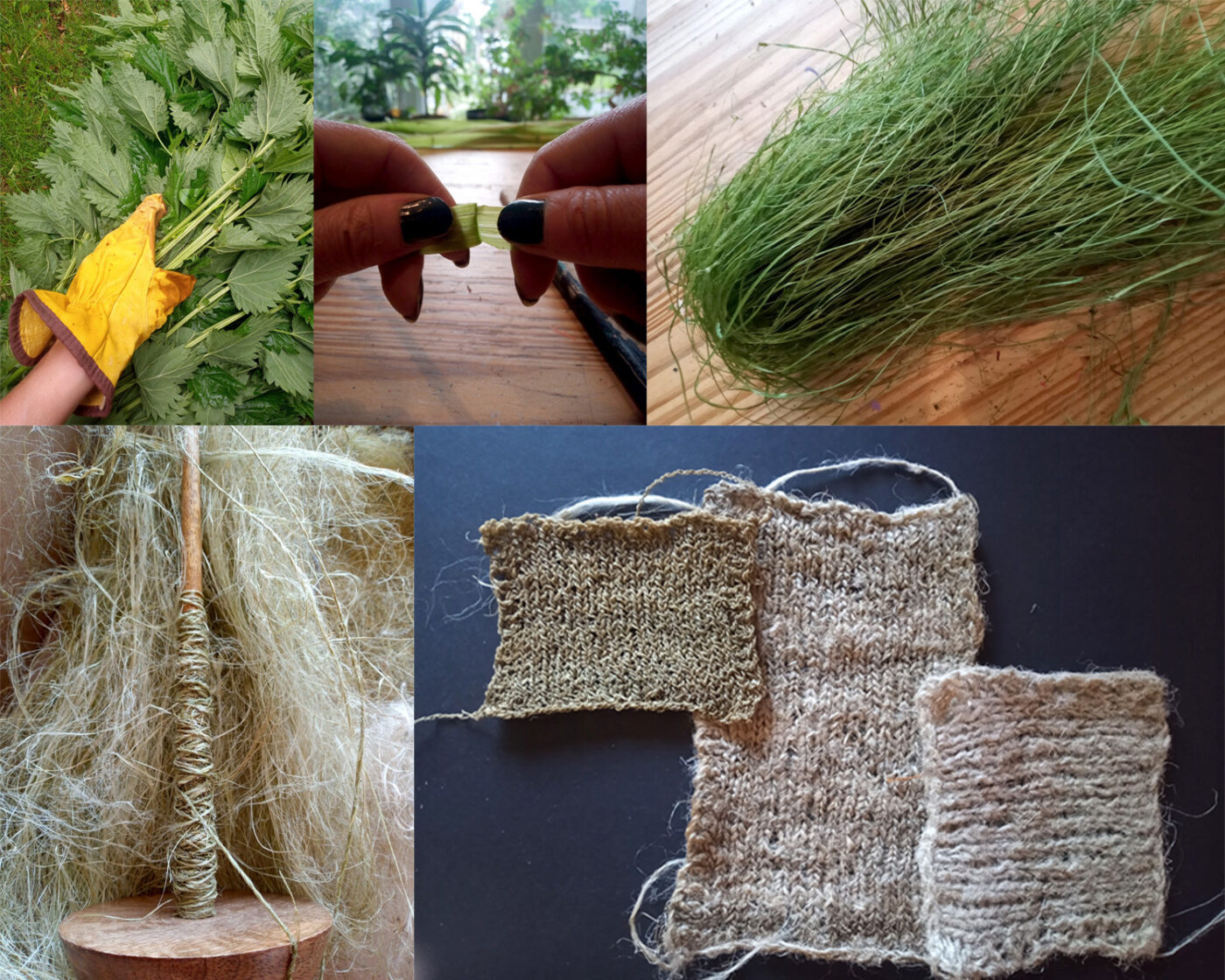Name: Cecilia Pisano
Here are some experiments in extracting, spinning and using nettle fibers to obtain
fabric.
There is little documentation of the use of nettle fiber in the Middle Ages,
probably because few textile fragments have survived due to conservation
difficulties and many fragments studied could be attributed to linen since its
cultivation is recognized and studied throughout Europe.
It’s quite sure that wherever nettle grows, it has been used for its fibers, even if the
extraction process is more laborious than that of, say, flax.
Nevertheless we find traces of the word “nettle fiber” (nettylcloth) both in
Latham’s List of medieval Latin words, which associates the word Urtica (from
Urtica dioica) with the term nettle cloth and the date of 1391, and in De
Vegatabilibus et Plantis by Albertus Magnus (1193-1280), the greatest scholar of
the Middle Ages who found clothing made with this fiber uncomfortable and
irritating to the skin.
Picking nettle is not without its drawbacks; its stinging hairs inject, among other
things, formic acid and histamine, and slight contact can cause painful blisters on
the skin. The process to obtain an acceptable fiber is quite long (I separate the
fibers one by one, delicately to preserve their length which can reach 16 inches)
but the results are encouraging.
All I have to do now is find a way to make the resulting fabrics less rough than
these, whose feel is reminiscent of coarse wool.
On the other hand, flexibility is there, at least in my samples knitted with
stockinette stitch.
Next step? Testing vegetable dyes on my samples And this is just the beginning of
a long and fascinating journey!

Very cool! This is a project I’m interested in trying myself, though I thought it might be better to wait for autumn, like dogbane fibers. I’m also not much of a knitter, but I thought it would make good cordage!
According to my experiments, fibers before flowering are of no interest. During flowering, the fibers are very beautiful, long and strong. I made string as thin as crochet thread with a few fibers of only thickness twined in z by hand. The darkest sample is knitted from this twine. I really encourage you to try working with nettle, it’s very satisfying!
I just harvested som and am looking to find more info on the process. Your photos show me what it could be. Thanks
Bonjour Robin! Je vous ai envoyé un petit message via Messenger!
Thanks for sharing your experimentation! I love to see people exploring things that maybe haven’t gotten as much attention.
It looks like all your fabric samples are knitted. I wonder if woven cloth might feel a bit less rough, since the threads wouldn’t be looped? Maybe something for future experiments?
Thank you for your kind words! the samples are actually knitted but I recently tried a few crochet stitches and the results are conclusive! My thread is also improving day by day and now has the look and feel of cotton thread! I do not give up!
It’s great to see this ancient fiber plant being utilized! Do you work the fibers green, or do you ret them?